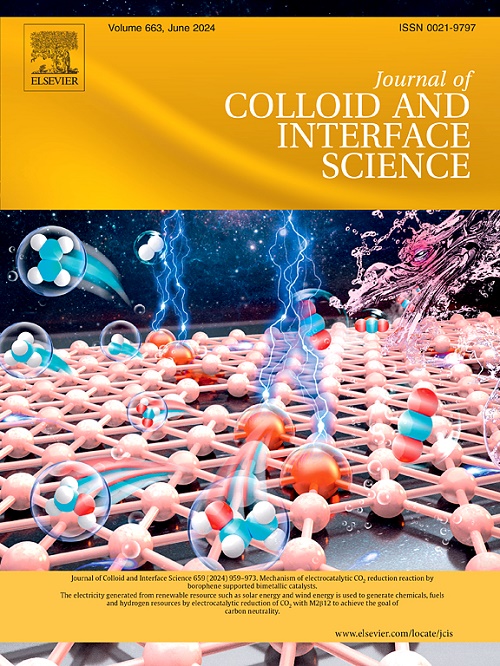Influence of positively charged nanoparticles on the stability of oil-in-water emulsions stabilized by a cationic surfactant at extremely low concentration
IF 9.4
1区 化学
Q1 CHEMISTRY, PHYSICAL
引用次数: 0
Abstract
Hypothesis
Charged particles and like-charged ionic surfactant can co-stabilize oil-in-dispersion emulsions at very low concentrations. The surfactant molecules adsorb at the oil–water interface endowing droplets with charge whereas particles remain dispersed in the aqueous phase forming a thick lamella between droplets. The reduced van der Waals attraction between droplets together with the electric double layer repulsion between droplets and between droplets and particles prevents droplets from flocculation and coalescence.
Experiments
n-Decane-in-water emulsions co-stabilized by positively charged alumina nanoparticles (0.0001–0.06 wt%) and cationic surfactant cetyltrimethyl-ammonium bromide (CTAB, 0.002–0.1 mM) were prepared and characterized. Specifically, the minimum particle concentration required for emulsion stabilization as a function of CTAB concentration was determined, which describes a V shaped boundary separating stable emulsions from unstable ones.
Findings
A model based on the Derjaguin-Landau-Verwey-Overbeek (DLVO) theory was proposed to calculate the droplet–droplet and droplet-particle interactions. Along the V shaped boundary particles are attracted by droplets at large distance but may form a monolayer between droplets when they approach at small distance. Both the attraction and repulsion between droplets and particles are proportional to the particle number surrounding unit area of droplet interfaces and the repulsion is always larger than the attraction. This together with the droplet–droplet repulsion ensures emulsion stabilization. Increasing CTAB concentration results in high interfacial potential but also high counterion concentration; to compensate, the particle concentration required for emulsion stabilization is initially reduced and subsequently increased yielding the V shaped boundary.

求助全文
约1分钟内获得全文
求助全文
来源期刊
CiteScore
16.10
自引率
7.10%
发文量
2568
审稿时长
2 months
期刊介绍:
The Journal of Colloid and Interface Science publishes original research findings on the fundamental principles of colloid and interface science, as well as innovative applications in various fields. The criteria for publication include impact, quality, novelty, and originality.
Emphasis:
The journal emphasizes fundamental scientific innovation within the following categories:
A.Colloidal Materials and Nanomaterials
B.Soft Colloidal and Self-Assembly Systems
C.Adsorption, Catalysis, and Electrochemistry
D.Interfacial Processes, Capillarity, and Wetting
E.Biomaterials and Nanomedicine
F.Energy Conversion and Storage, and Environmental Technologies

 求助内容:
求助内容: 应助结果提醒方式:
应助结果提醒方式:


